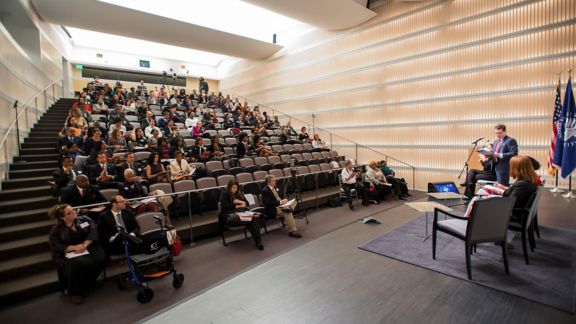Smoke-Free Screens Initiative

NORC at the University of Chicago has joined Truth Initiative’s Smoke-Free Screens Initiative, which examines the prevalence of tobacco imagery in popular media, including streaming TV, broadcast TV, cable TV, film, music videos, and social media. Since 2002, the University of California, San Francisco, has collaborated with Breathe California to collect tobacco imagery data in movies in the Smokefree Media onscreen tobacco database. In 2021, NORC joined this effort, now funded by Truth Initiative.
An abundance of scientific evidence confirms that exposing young audiences to onscreen tobacco imagery causes millions of adolescents to start using tobacco products. In 2003, researchers, state attorneys general, and policymakers put the Motion Picture Association of America (MPA) on notice of the need to eliminate youth exposure to smoking on screen. Since this warning, the film industry has taken only modest steps to enforce stricter regulations for tobacco imagery in youth-rated (G, PG, PG-13) movies. While tobacco imagery in youth-rated films has steadily declined in recent years, tobacco and nicotine product use and imagery in these films is still present.
The COVID-19 pandemic drastically changed how films are released and watched. Movie theaters generally closed their doors due to various stay-at-home orders. Production companies quickly adapted by releasing films on streaming-video-on-demand platforms like HBO Max and Disney+. People are now more likely to watch newly released movies on streaming services than in theaters, creating challenges for measuring exposure as these services typically do not publicly release audience metrics. Additionally, streaming platforms grant youth easier access to adult-rated films, which often contain higher amounts of tobacco imagery, and many households fail to implement protective parental control settings on these platforms. The result is that youth exposure to tobacco imagery may now be higher than ever before.
With changes to movie consumption in 2020 and 2021, NORC is taking an opportunity to refresh the methods used to accurately capture and assess tobacco imagery exposure in films.
The new methodology may include:
- Redefining audience viewership metrics.
- Layering existing tobacco use data.
- Surveying youth panels to capture the reach and impact of tobacco imagery in movies released on streaming platforms with behavioral health outcomes.
NORC conducts annual analyses and produces yearly reports on the findings related to tobacco imagery in newly released movies. The National Association of Attorneys General, tobacco control policymakers, public health professionals, and researchers will leverage these results to advocate for production studios to protect youth from a lifetime of nicotine addiction and health complications from tobacco use by eliminating tobacco imagery from youth-appealing films.
Project Lead
Related Tags
Project Leads
-
Sherry Emery
DirectorProject Director -
Dani Heide
Senior Research DirectorSenior Staff










